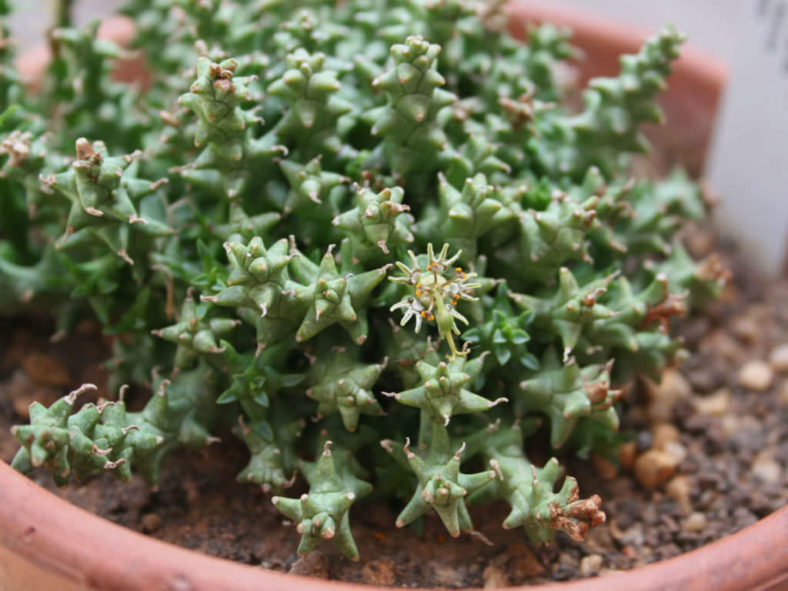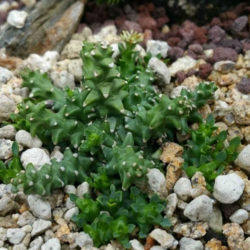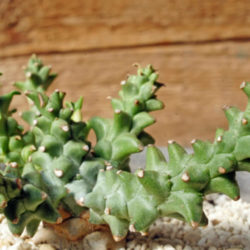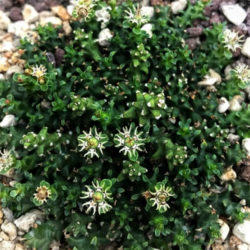Scientific Name
Euphorbia wilmaniae Marloth
Synonym(s)
Euphorbia patula subsp. wilmaniae, Euphorbia planiceps
Scientific Classification
Family: Euphorbiaceae
Subfamily: Euphorbioideae
Tribe: Euphorbieae
Subtribe: Euphorbiinae
Genus: Euphorbia
Description
Euphorbia wilmaniae, also known as Euphorbia patula subsp. wilmaniae, is a low-growing succulent that forms clumps of dark green, scattered rhizomatous branches with conical tubercles. Occasionally, the plant forms a densely packed cushion-shaped mass up to 12 inches (30 cm) in diameter. The branches are erect to spreading, cylindrical, and tapering towards tips, and can reach up to 1.2 inches (3 cm) in length and 0.5 inches (1.2 cm) in diameter. The leaf-rudiments are grayish-green and up to 0.15 inches (0.4 cm) long.
The synflorescences are up to 0.4 inches (1 cm) in diameter and appear at the branch tips in fall.
Origin
Euphorbia wilmaniae is native to South Africa (Northern Cape).
Etymology
The specific epithet "wilmaniae (wil-MAN-ee-ay)" honors Maria Wilman (1867-1957), a South African geologist and botanist.

Hardiness
USDA hardiness zone 9b to 11b: from 25 °F (−3.9 °C) to 50 °F (+10 °C).
How to Grow and Care
Euphorbias are very easy to care for. They require a little pampering to become established, but once they are, they are self-sufficient. More die from too much care and watering than from neglect. Euphorbias need well-draining soil and lots of sunlight. They are not particular about soil pH but cannot tolerate wet soil. Unlike most succulents, Euphorbia does not handle long periods of drought well. It may need weekly watering during the summer. Water whenever the soil is dry several inches below the surface. Water deeply, but don't let them sit in wet soil, which can cause root rot. Add some organic matter or fertilizer to the planting hole. Feed with a half-strength fertilizer monthly if you are growing them in containers or your soil is poor.
Euphorbia can be grown from seed, but they can be difficult to germinate (or even find). It is usually propagated by cuttings. This can be tricky because of the exuding sap. Rooting hormone is recommended with Euphorbias. They tend to grow problem-free, but there are a few pests and diseases to be alert for.
See more at How to Grow and Care for Euphorbia.
Links
- Back to genus Euphorbia
- Succupedia: Browse succulents by Scientific Name, Common Name, Genus, Family, USDA Hardiness Zone, Origin, or cacti by Genus
Photo Gallery
Click on a photo to see a larger version.


